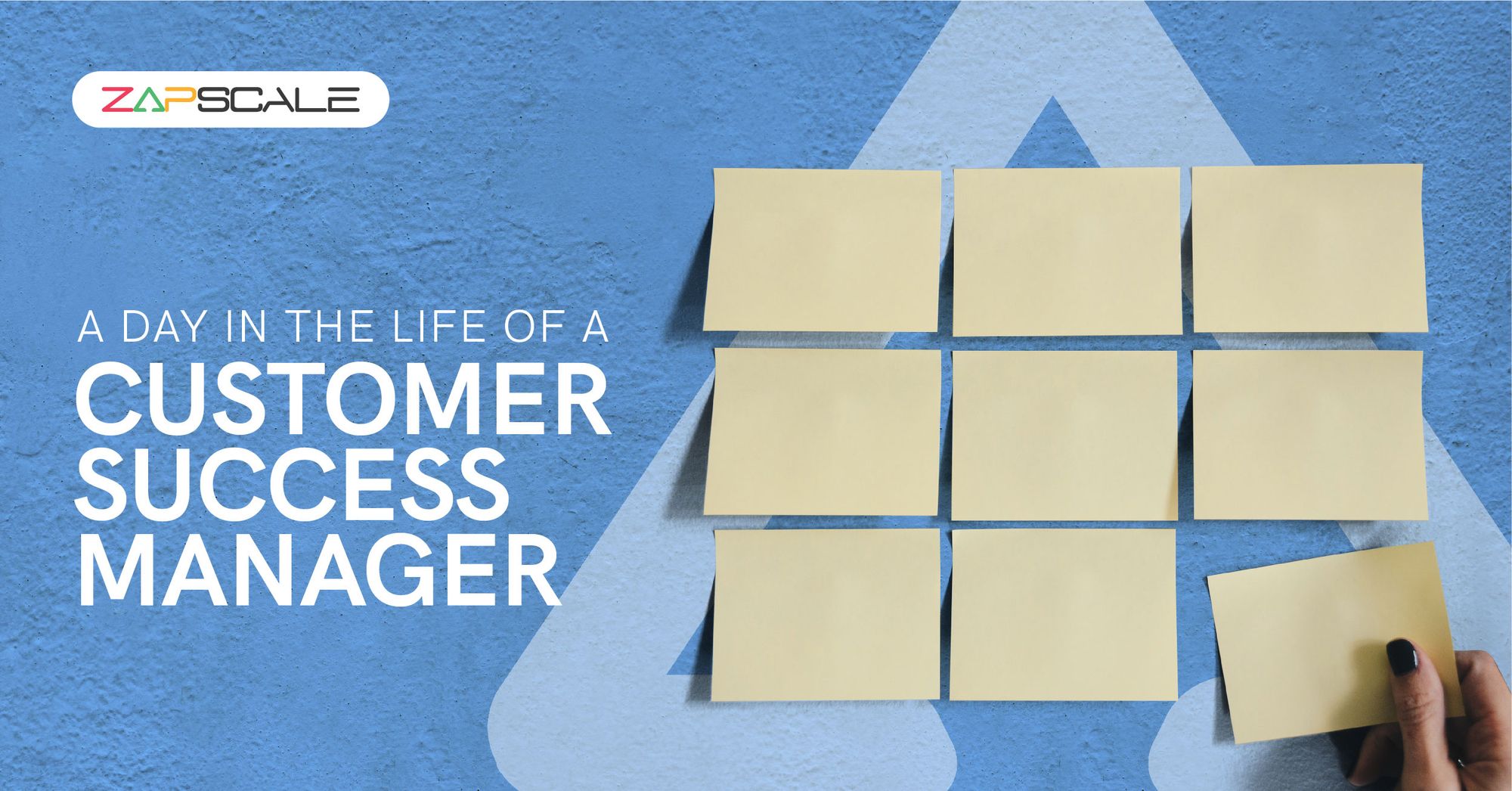CATEGORY > Customer Success Management
A day in the life of a Customer Success Manager

If you are wondering who is a Customer Success Manager and what does this person do? Let’s try and walk you through what a day in a life of a CSM looks like.
Let’s put it this way, if the product team was the architect of the house and the CS team the interior designing team, the CSM is the interior designer. Knowing what elements to put where in the house to enhance the look and feel of it, knowing where to procure them from and then finally placing those objects in the right place. This is exactly what a CSM does!
Let’s jump right in and list down what does it take to be a successful CSM:
- Initiating conversation doesn’t scare you - yes, I know what you’re thinking, it’s the most needed attribute for any job really, but guess what? You cannot possibly do without this one in Customer Success. You have to make your customer your friend. Building rapport is key. They need to feel that they are in the best hands and that you got them covered.
- Multi-tasking doesn’t make you pull your hair apart - you are actually able to keep your calm while knowing you have 10 things to strike off your list along with firefighting on the go. I emphasize this attribute because this becomes crucial in defining your comfort with getting things done. There will be multiple stakeholder conversations, customer conversations, manager conversations and so much more. And so it becomes crucial that you are composed in times when your plate is full and ensure that nothing falls off the plate while walking with it.
- And you can find the file that person shared with you, in a jiffy - as cliché as it may come across, organization - of time, resources, effort and economics is critical in a CS role. Effective organization is the backbone of your entire workday.
These behavioral traits enable the CSM's day to be smooth and also give a sense of control for them to drive their day in the direction they wish to rather than letting the day drive them.
There are some key actions that take place on a daily basis in the life of a CSM, which are as follows:
- Building a relationship with internal teams - Starting with a seamless internal sales to CS handover, moving to implementation teams, and working closely with the product team on an ongoing basis, are some of the key stakeholder relationships a CSM has to learn to build in order to ensure stellar customer experience and also learn how to hold the fort at crucial times, being the face of the organization.
- Onboarding & Implementations - I’ve spoken about the importance of successful customer onboarding in my previous blog and cannot harp enough about how instrumental this is to align not just your day but days to come with the customer. This defines the foundation of your relationship with your customers.
- Collaborating with customers/ their teams - Goes without saying, you are the Customer’s go-to person and will be talking to them on a daily, weekly, and monthly basis, based on what maturity stage of product adoption they’re at!
Daily calls: mostly include resolving ongoing support queries and assisting the customer with any ad hoc requests.
Weekly calls: include informing the customers of ongoing progress updates and understanding any major blockers, sometimes training as and when required, and also setting up shorter goals to speed up the product adoption.
Monthly/Quarterly Business Reviews: are to align on common measurable goals set at the start of the engagement and also in order to track the progress so far and to set the expectation on the way forward.
Last but not the least, how does a super CSM get all of the above done? Technology! Who would have thought, right? Jokes aside, none of this is possible with the right tools and platforms in place, including but not limited to:
- Emails - you have to ace your inbox management skills.
- Slack - you will be on multiple internal/external channels and get pinged a hundred times, knowing how to prioritize your communication then becomes key.
- CS Tool - A good CS tool facilitates all these activities of a CSM. Right from aligning the tasks for the day, tracking the onboarding of a customer, setting and defining playbooks that can be customized, and tracking key metrics for the accounts.
In short, a good CS tool makes the lives of a CSM easy and also helps them maximize their output by providing a direction for all accounts one handles because you are at all times aware of the health of your customers.
4. CRMs - familiarising yourself with as many CRMs makes it easy because you would be using one to manage your renewal/upsell pipelines in addition to plugging in customer CRMs into your tool too!
ABOUT THE AUTHOR
Popular from Customer Success Management
Quality Content,
Straight To Your Inbox!
Subscribe for the latest blogs, podcasts, webinars, and events!

Write a Blog
If you have experience in CS and
a flair for writing, we’d love to
feature you.
Write to us on
hello@zapscale.com





